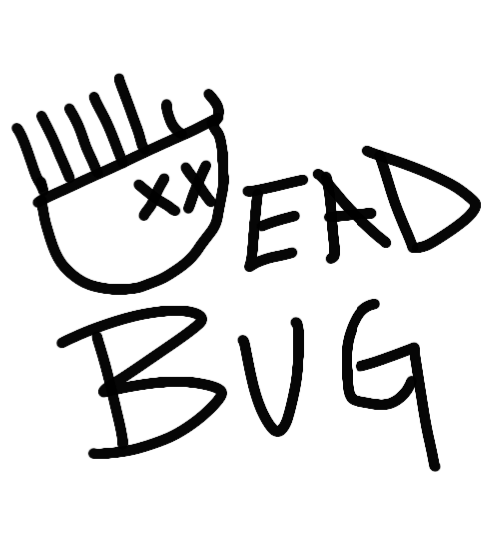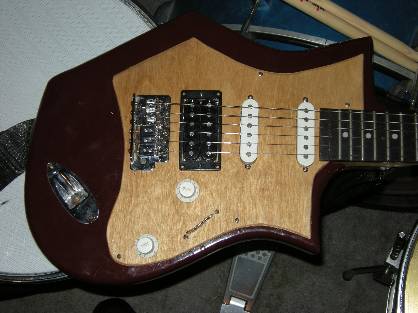I found a guitar in the dumpster that someone threw away. From the looks of it they smashed it on stage sledge hammer like then danced a small but effective jig on it. Generally speaking it was scrap wood, but being a guy that often has to figure out how to fix his own gear I thought it would be a good project to take one and test some of the more major guitar repairs that I have only ever read about and been to afraid to try in risk of really messing up my instrument. When I found it it was in multiple pieces and non of the pieces were in any form of working condition. Originally it was a red Harmony Stratocaster with a white pick guard.
My repairs include:
Neck work:
- The fret board was separating from the neck so I reset and glued it back on.
- I had to reset and replace about half of the frets because they were either missing or falling out (notice I was unable to replace the last fret because the wood was broken off so I just re-glued the wood back on and left the fret out.)
- realigned the truss rod and back stabled the footing to counter the damage done by someone over tighten it (this involves drilling out the hole and sinking in some doctored washers etc. Its not hard but if you mess up you can toss the neck out)
- I dressed the frets and straighten the neck because it had a pretty bad hump in it around the 12 fret as well as a raised tongue. This basically means that someone had be tighten the truss rod way too much and it cause the neck to buckle and curve.
- replace the nut and filed down the string notches.
- I repainted the head and adjusted the angle of the string coming off the nut.
- I also did a few minor touch ups such as dressing the tuning and tighten them a bit to my personal preference but that is easy stuff to do.
Wood work to the Body:
- the guitar is made from laminated sheets of wood that do to the multiple impacts were splitting apart or fraying through out the majority of the lower half of the body. So I stripped off the factory paint and clear coat on the back (extremely thick stuff on guitars) and re glued much of it back together. I also had to reinforce the main extension saddle through the center of the guitar (the area directly under the strings that holds a lot of pressure.) What was missing I either rebuilt or used multiple layers of a strong wood filler. Once the general integrity of the body was back to a usable condition I basically sculpted the the last layer with wood filler to take out all the dings, foot prints and cracks. Then added a few layers of new paint
- I also made the pick guard from scratch using a jigsaw and sandpaper then stained it. (on a side note, I discovered that a cork from a wine bottle is THE BEST sanding block for fine sanding)
- The body design I decided was largely due to necessity but some artistic license was taken as well. Some of the guitar was so badly damaged from the impact wounds that cutting it off was the best option. The upper horn for example was split as well as the mount for the neck so I just did away with it etc. (This is what it pretty much looked like when it was new http://www.grafx-design.com/images/redStrat.jpg)
The Electronics:
- The majority of the electronics were in working condition. Aside from two pickups and lack of a grounding wire.
- The original bridge pickup was beyond repair so I replaced it with the black Humbucker a friend let me have.
- The center pick up was destroyed but all the parts were there so I rewrapped it using copper wire and tuned the magnets. It works again.
- I added a grounding wire to the guitar
- I shielded the guitar. This involves creating a cavity of metal that surrounds all the electronics, This cuts a large amount of the background buzz given off by the conflicting electric fields of the electronics that you don't want your pickups to hear.
- I replaced the saddles (the little things where the string touches the guitar on the bridge)
- Aligned and dressed the floating bridges as well as drop set it into the body of the guitar.
Thats pretty much it, all totaled it cost me about twenty dollars in paint, stripper, and wood filler and two weekends.
In regard to photo quality:
When I am engrossed in a project documentation is never in the fore front of my mind. So I could apologize for the quality of the pictures or you could just get over it.

